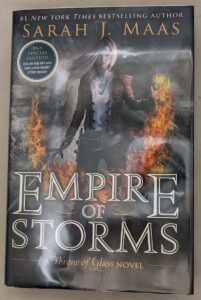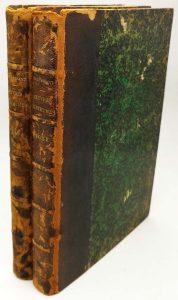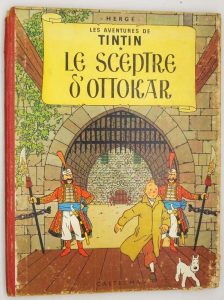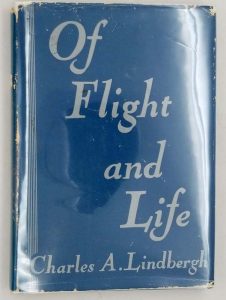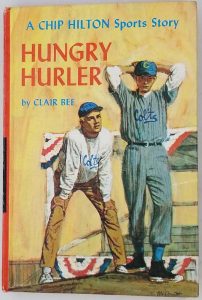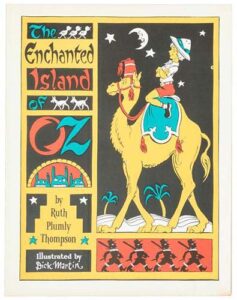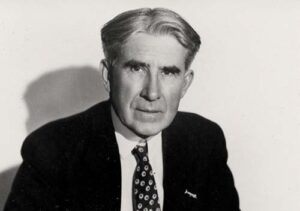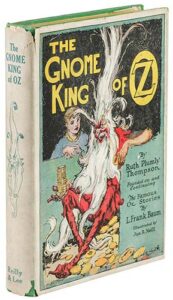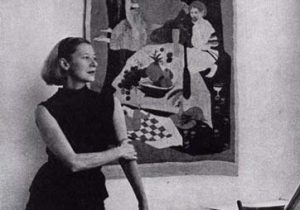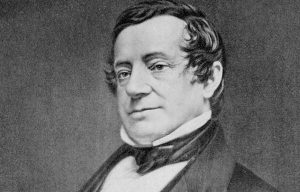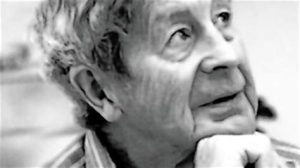James Thurber – American author, 1894-1961
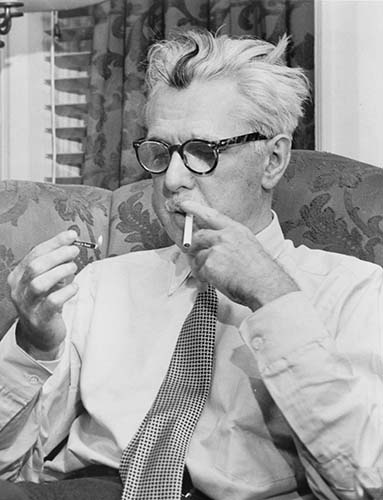
James Grover Thurber, celebrated for his mordant sketches of contemporary life in the 1940s and 1950s, James Thurber’s five works that have been classified as children’s books show a lover of words at play. The books, starting with Many Moons (1943) and ending with The Wonderful O (1957), are filled with wordplay, allusions, rhymes, alliteration, snatches of song and poetry, wild flights of fancy that veer into the absurd, and — in the greatest departure from his work for adults —happy endings.
Many Moons is considered his best book for children, and it shows a tenderness and charm that his writing for adults does not. In its first incarnation, with illustrations by Louis Slobodkin, it won the Caldecott Medal for 1944. Slobodkin’s illustrations emphasize the theatrical, light-opera quality of the tale, depicting a tiny and seemingly frail Princess Lenore nearly overwhelmed by the soaring castle surrounding her, making the solution to her problem all the more satisfying. Marc Simont re-illustrated the story for reissue in 1990, putting the fantasy of the piece on a more magical plane and calling forth a greater awareness of the King’s love for his ill daughter.
In Many Moons Thurber succeeded in corralling his acid wit and penchant for the absurd with a silken halter of sweetness and pure storytelling skill; in his subsequent books for children, he was less successful at controlling his natural pessimism. The Great Quillow (1944), The White Deer (1945), and The Thirteen Clocks (1950) are highly colored, extravagant fairy tales in which his wonderfully dark humor and basic disgust with the human race become more and more apparent. In his final children’s book, The Wonderful O, the melancholy and sharpness that was a hallmark of his writing for adults overwhelms this slim tale of pirates who ban the letter O from the language of a small, mythical island.
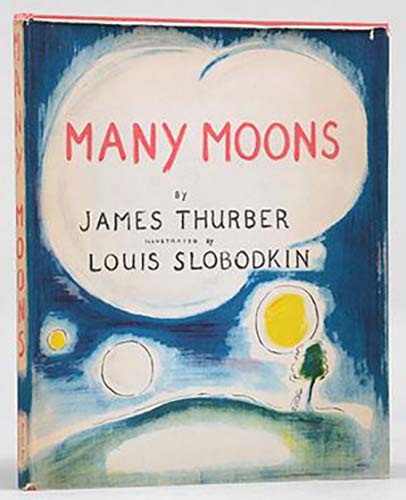
James Thurber’s absurd view of his own childhood certainly influenced his writing for children. Born in Columbus, Ohio, the second of three boys in a “family of eccentrics,” as he termed it, Thurber grew up amidst a large cast of unlikely characters. His father was a political animal whose employment in various appointed capacities lent an uncertain and peripatetic air to the Thurber household. His mother, Thurber wrote, was “an aspiring actress,” and “deprived of a larger audience, the frustrated comedienne performed for whoever would listen.” A childhood accident while playing “William Tell” with his brothers left Thurber with permanently impaired eyesight, which gradually deteriorated over his lifetime, eventually blinding him, a handicap that would cause him great pain, both physically and spiritually. Upon graduation from Ohio State University in 1919, he worked as a newspaper reporter in Columbus, Paris, and New York.
It was at a cocktail party in New York City in 1927 that he met E. B. White and began the firm friendship (and sometime literary collaboration) that was to last the rest of his life. E. B. White introduced Thurber to Herbert Ross, founding editor of the New Yorker, which was then in its infancy. Ross hired Thurber as managing editor, and while Thurber was uncomfortable with executive authority and eventually demoted himself down to staff writer and then off the magazine entirely to become a contributing writer, he nevertheless had much to do with setting the tone and style that made the New Yorker such a literary high-water mark during its halcyon days.
James Thurber’s writing took many forms — all of them short. Essays, sketches, fables, satires, parables, fantasies, and reminiscences all share his bleak view of an overwhelming, chaotic world. But in the best of his writing for children, Thurber felt free to let good triumph over evil, love overcome hate, virtue gain its just reward, and hope hold fast.
S.G.K.
Source: Children’s Books and their Creators, Anita Silvey.
James Thurber – Children’s Books
- Many Moons, 1943 (later condensed as The Princess Who Wanted The Moon)
- The Great Quillow, 1944
- The White Deer, 1945
- The 13 Clocks, 1950
- The Wonderful O, 1957
